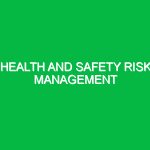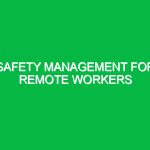In the ever-evolving landscape of the Health, Safety, and Environment (HSE) domain, the concept of Safety Culture Enhancement stands out as a pivotal factor in ensuring workplace safety and employee well-being. But what does this term really mean? At its core, Safety Culture Enhancement involves the intentional improvement of safety practices, attitudes, and behaviors within an organization. It’s about cultivating an environment where safety is not just a priority but a fundamental value shared by all employees, from top management to frontline workers.
The relevance of Safety Culture Enhancement cannot be overstated. A robust safety culture significantly reduces the likelihood of accidents, injuries, and even fatalities in the workplace. This is particularly critical in industries such as construction, manufacturing, and oil and gas, where the risks are inherently higher. By fostering a culture that prioritizes safety, organizations not only protect their workforce but also enhance productivity, reduce costs associated with accidents, and improve their overall reputation.
The Landscape of Hazards and Risks
Understanding the various hazards and risks associated with Safety Culture Enhancement is crucial. In any given workplace, potential hazards can be broadly categorized into physical, chemical, biological, ergonomic, and psychosocial risks.
Physical Hazards
Physical hazards include anything that can cause harm to employees, such as machinery, noise, slips, trips, and falls. For instance, in a manufacturing plant, the risk of injury from moving equipment is always present. A comprehensive safety culture would address these risks by implementing physical safeguards, regular training, and ongoing assessments of workplace conditions.
Chemical Hazards
Chemical hazards arise from exposure to harmful substances. This includes everything from toxic fumes to corrosive materials. A company that embraces Safety Culture Enhancement would ensure that Material Safety Data Sheets (MSDS) are readily available and that employees are trained on proper handling techniques. This proactive approach minimizes the risk of chemical spills and employee exposure.
Biological Hazards
Biological hazards involve exposure to harmful biological agents, such as bacteria or viruses. In healthcare settings, for example, the risk of needle-stick injuries or exposure to infectious diseases is a constant concern. Enhancing the safety culture in such environments includes rigorous training on hygiene practices and the proper disposal of hazardous materials.
Ergonomic Hazards
Ergonomic hazards relate to the physical strain placed on employees through repetitive movements, improper lifting techniques, or poorly designed workstations. Companies can enhance safety culture by investing in ergonomic assessments and adjustments that promote proper body mechanics, thus reducing the risk of musculoskeletal injuries.
Psychosocial Risks
Lastly, psychosocial risks encompass factors that can affect mental well-being, such as workplace stress, harassment, or lack of support. An organization that prioritizes Safety Culture Enhancement will focus on creating a supportive environment where employees feel valued and safe to express concerns.
Best Practices for Safety Culture Enhancement
To effectively enhance safety culture, organizations must adopt a multi-faceted approach that includes training, communication, and continuous improvement.
Training and Education
Regular safety training is essential. Companies should implement ongoing education programs that cover safety procedures, emergency protocols, and hazard recognition. For example, a construction firm might conduct weekly safety briefings to discuss potential hazards and preventive measures. This not only reinforces safety knowledge but also fosters a sense of community among workers.
Open Communication Channels
Creating open lines of communication is another critical aspect. Employees should feel empowered to report safety concerns without fear of retribution. Establishing a “safety champion” role within teams can facilitate this process by providing a point of contact for safety-related issues. Encouraging feedback through anonymous surveys can also help identify areas for improvement.
Leadership Commitment
Leadership plays a pivotal role in shaping safety culture. Top management must demonstrate a commitment to safety through their actions and decisions. This was evident at a major oil company that implemented a zero-incident philosophy. By prioritizing safety in board meetings and allocating resources for safety initiatives, they fostered a culture where every employee understood the importance of safety.
Regular Safety Audits and Assessments
Conducting regular safety audits is essential for continuous improvement. These assessments should evaluate compliance with safety regulations, the effectiveness of safety programs, and overall workplace conditions. For instance, a manufacturing plant may perform quarterly audits to identify potential hazards and implement corrective actions promptly.
Regulations and Standards Governing Safety Culture Enhancement
Safety culture is not just a best practice; it is also governed by various regulations and standards. Understanding these can help organizations align their safety initiatives with legal requirements.
Occupational Safety and Health Administration (OSHA)
In the United States, OSHA sets and enforces standards to ensure safe working conditions. Organizations must comply with OSHA regulations, which mandate that employers provide a workplace free from recognized hazards. Safety Culture Enhancement initiatives should align with these standards to ensure legal compliance and worker safety.
International Organization for Standardization (ISO) Standards
ISO 45001 is an international standard that outlines requirements for occupational health and safety management systems. Companies seeking to enhance their safety culture can adopt this standard as a framework, promoting a systematic approach to improving worker safety and health.
Environmental Protection Agency (EPA) Regulations
For organizations that deal with hazardous materials, compliance with EPA regulations is critical. This includes proper waste management and adherence to environmental safety standards. Enhancing safety culture in these contexts not only ensures compliance but also promotes environmental stewardship.
Conclusion: The Ripple Effect of Safety Culture Enhancement
Enhancing safety culture is not merely a regulatory obligation; it is a vital investment in an organization’s most valuable asset—its people. By prioritizing training, fostering open communication, and demonstrating leadership commitment, companies can create a safe and productive work environment. The impact of such initiatives extends beyond the workplace, influencing employee morale, retention, and the overall reputation of the organization.
In conclusion, Safety Culture Enhancement is a continuous journey, requiring dedication and active participation from everyone in the organization. It is about embedding safety into the very fabric of the workplace, ensuring that it becomes an integral part of the organizational ethos. By doing so, companies can not only mitigate risks but also cultivate a thriving workplace where safety is celebrated and prioritized.


